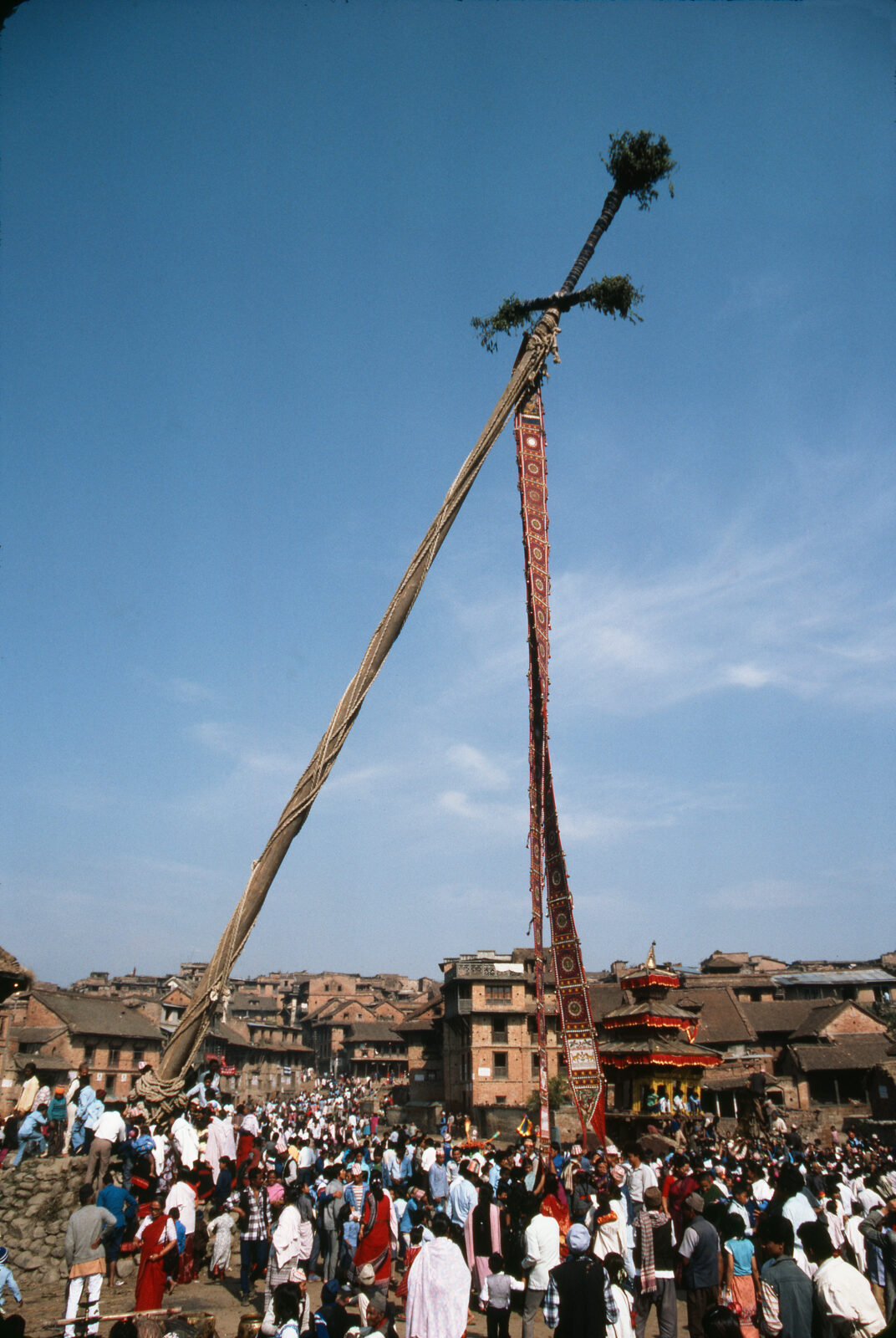


For Nepalese people, seasonal transitions are marked by festivals and celebrations, which relate to the deep ancestral traditions of the people of the Kathmandu Valley. For the Newars (the indigenous people of the Kathmandu Valley), the beginning of the spring season coincides with the celebration of Bisket Jatra.
After a long winter, many people look forward to the first day of spring because it signals the start of new life and favorable weather. For people in Nepal, the start of spring is all this and more—it’s also the start of the new year!
The Bisket Jatra festival coincides with the Nepalese New Year and, generally, it falls sometime around April 15. Curator Dr. Gautama Vajracharya suggests that the Newars keep this April date instead of the March equinox observed elsewhere in reference to a much earlier time in their ancestral history, as the precise timing of the equinox has shifted over the centuries.
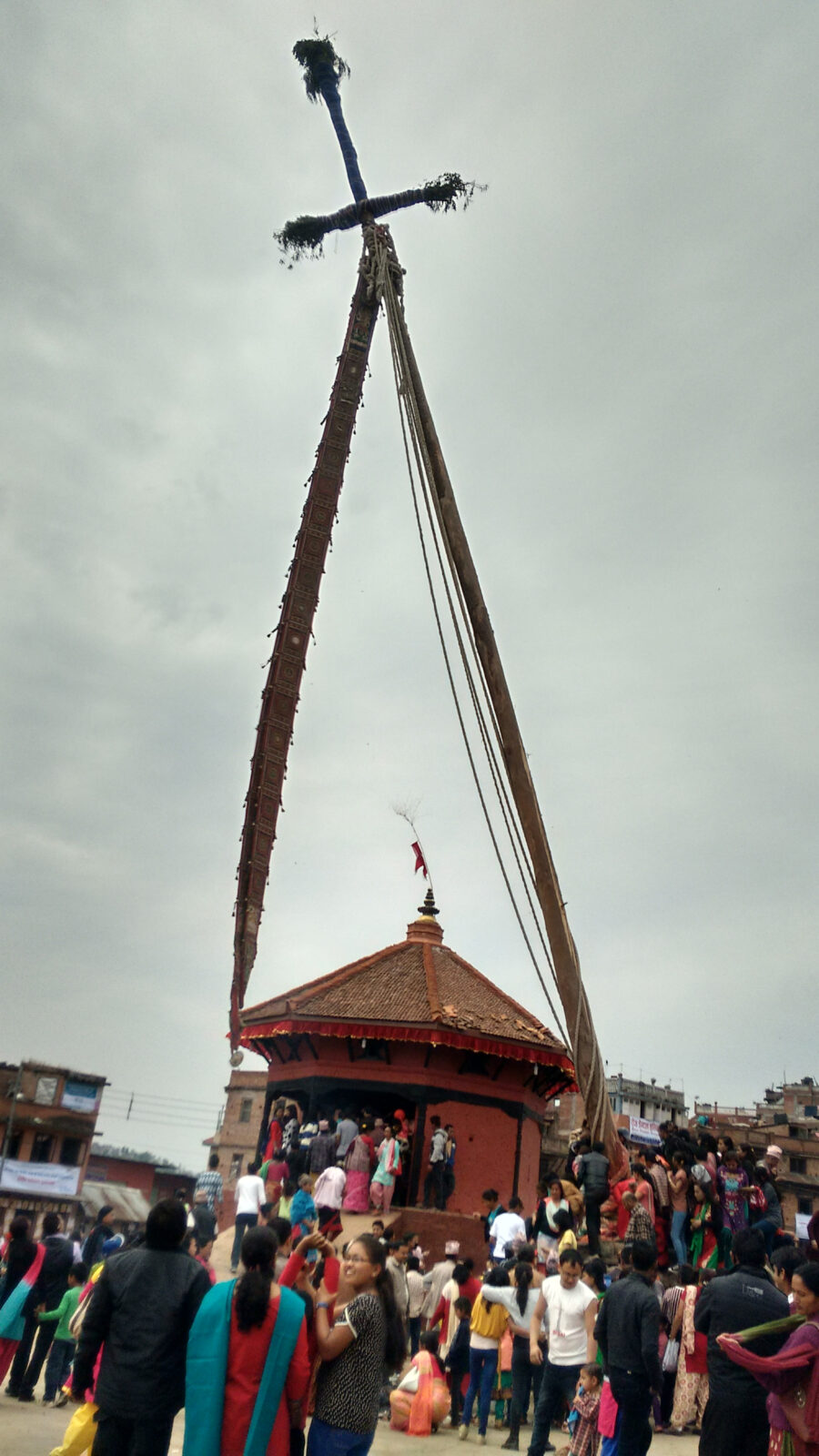
Raised pole marking the festival of Bisket Jatra.
Bhaktapur, one of the three major cities of the Kathmandu Valley, has the most dramatic celebrations for Bisket Jatra. During the festival, a large wooden chariot carrying a sculpture of the wrathful Bhairava is charted around town. At a certain point, the chariot stops to bear witness to a tug of war battle between the east and west sides of town. The most climatic display comes with the erection of a 25-meter-high pole which comes crashing down the next day.
Read on for more about the seasonal festivities of the Kathmandu Valley.
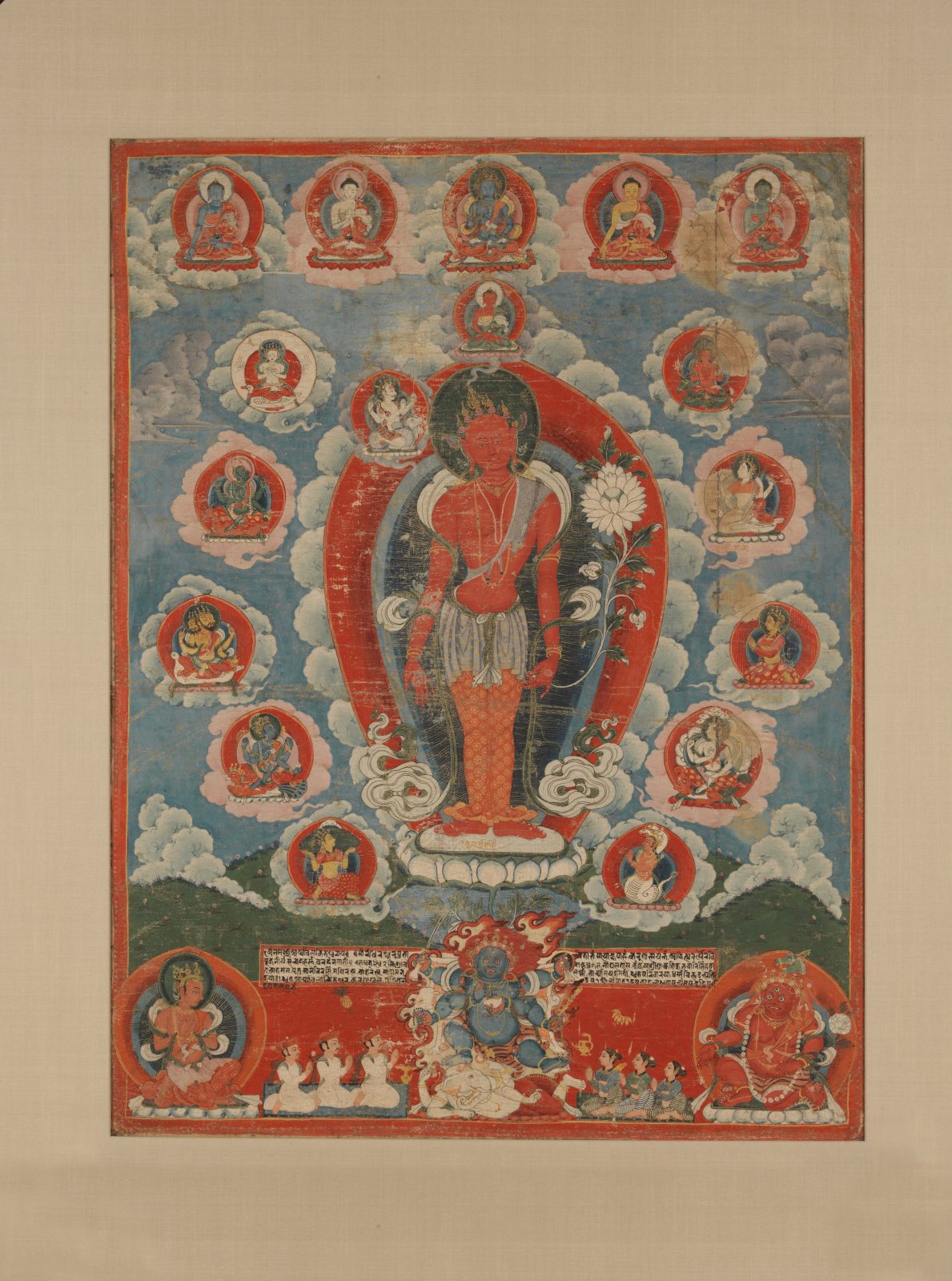
Red Avalokiteshvara, also known as Bunga Dya, and Macchendranath; Nepal; Dated by inscription 1842; Pigments on cloth; Rubin Museum of Himalayan Art, Gift of Shelley and Donald Rubin; C2006.66.45
A deity with many identities, Bunga Dya (as he is locally called) is a rain god who is also venerated by being carried in a chariot procession.
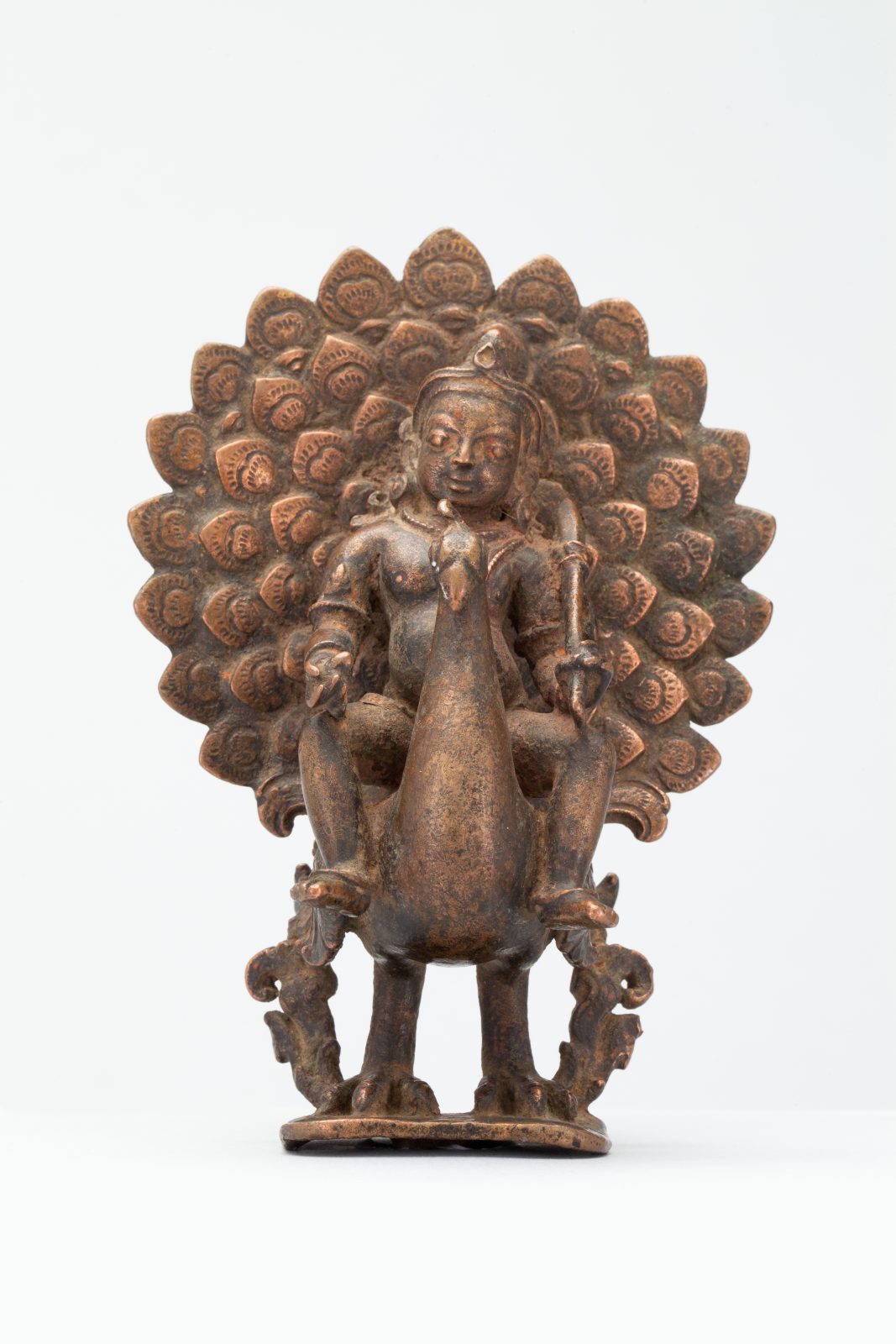
Kumara; Nepal; 11th century; Metal; Rubin Museum of Himalayan Art; C2004.14.10
Kumara is the son of the Hindu gods Shiva and Parvati and is worshiped just prior to the monsoon rains.

Two-sided Festival Banner of Varunani and Varahi; Nepal; 17th or 18th century; Pigments on cloth; Rubin Museum of Himalayan Art; C2007.19.1
Varunani is one of the mother-goddesses that Newar’s worship through masked dances
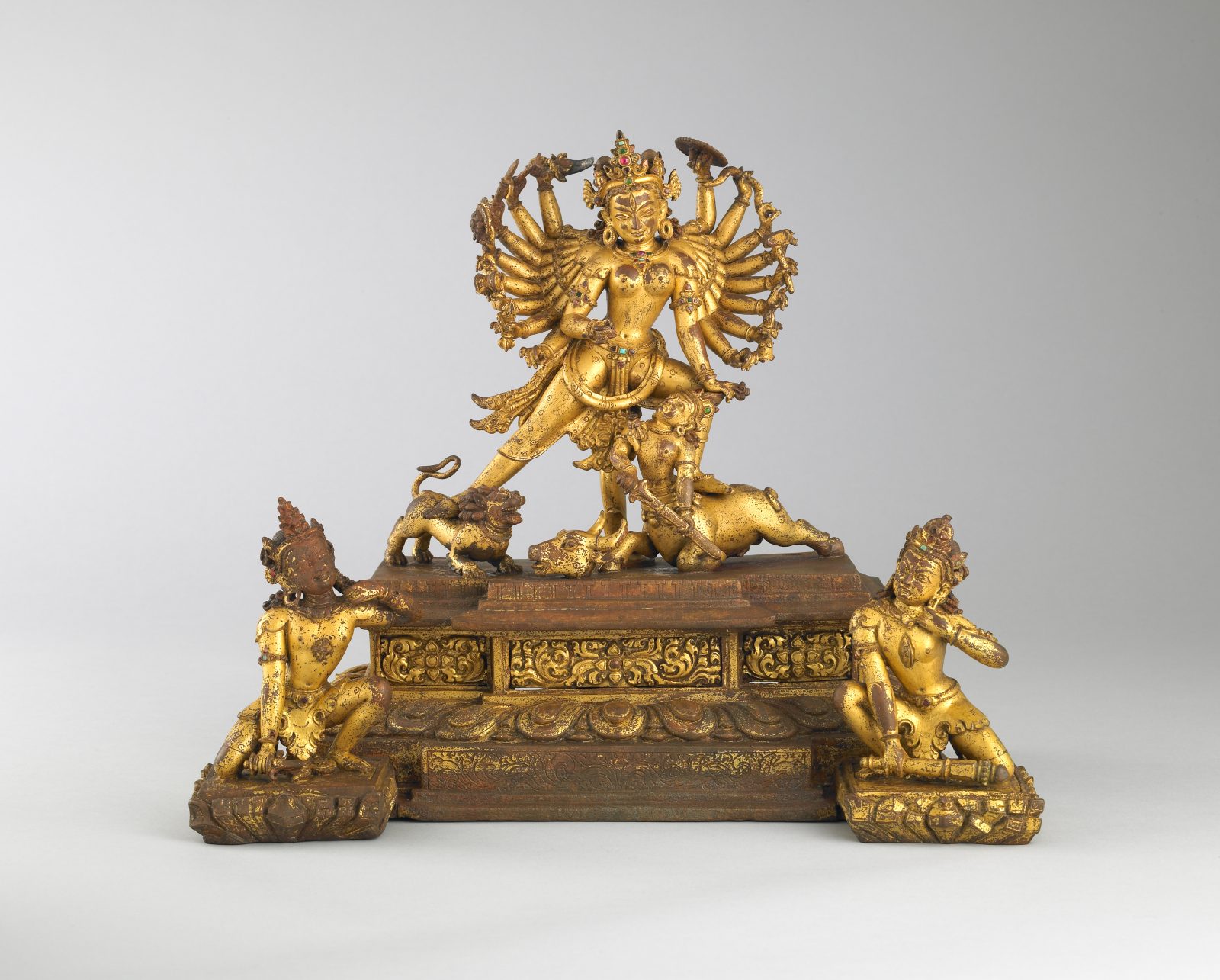
Durga Killing the Buffalo Demon (Durga Mahisasuramardini); Nepal; 12th-13th century; Gilt copper alloy; Rubin Museum of Himalayan Art; C2005.16.11
As depicted in one of the jewels of the Rubin Museum’s collection above, Durga is worshiped during the autumn to give thanks for the harvest and to protect it from possible bandits.
Get the latest news and stories from the Rubin, plus occasional information on how to support our work.